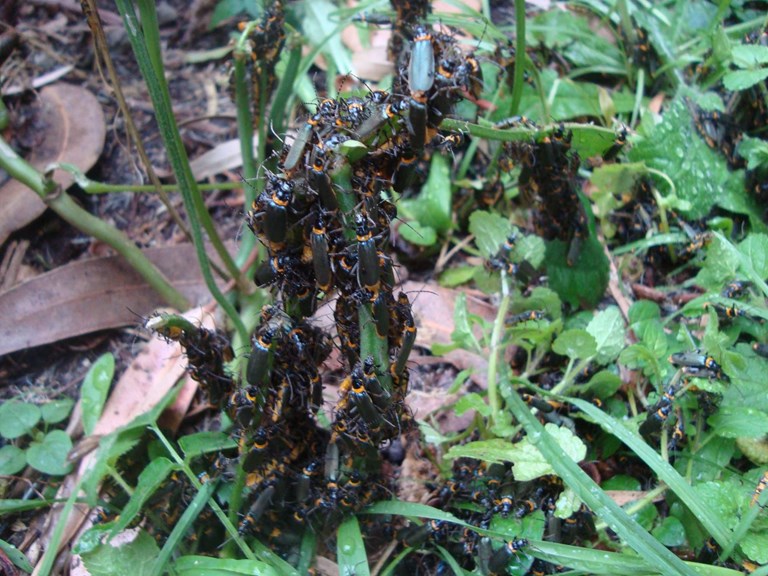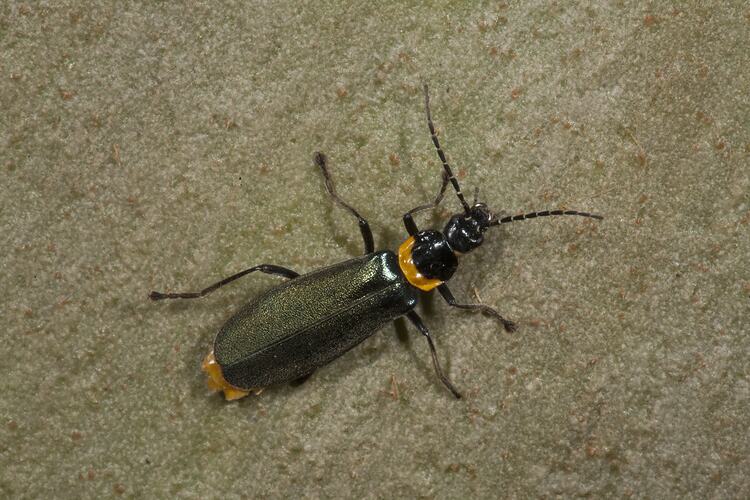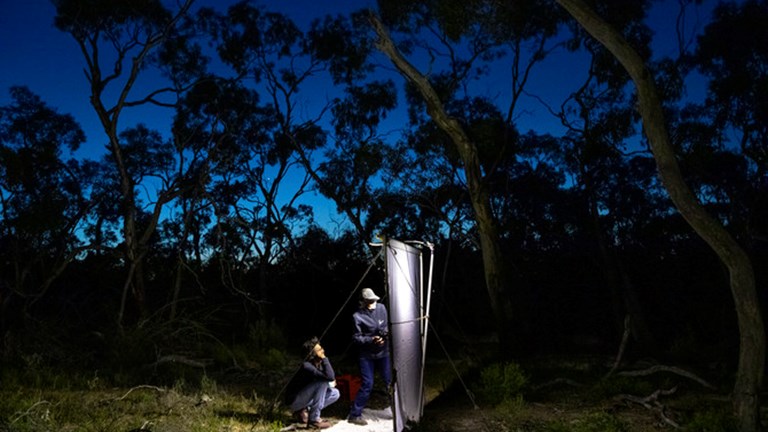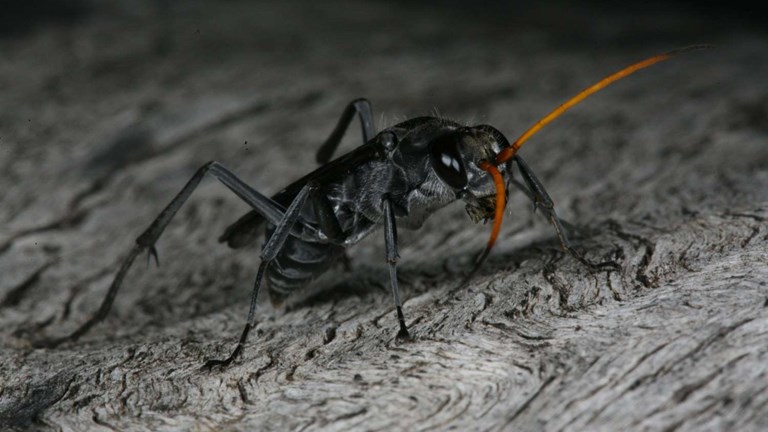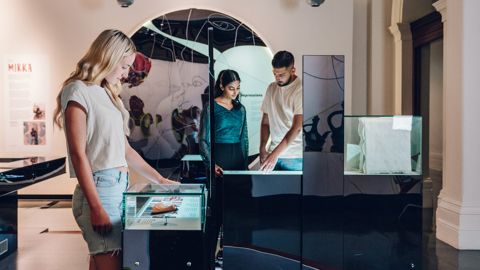What are these swarming beetles in my garden?
Each January, the Museum receives many enquiries about swarms of beetles in suburban gardens in and around Melbourne; they are Plague Soldier Beetles, Chauliognathus lugubris.
What do Plague Soldier Beetles look like?
The Plague Soldier Beetle is a flattened, elongated, soft-bodied beetle with a thin yellow-orange stripe across the back of the pronotum—the area just behind the head. It has metallic olive-green elytra (hardened forewings), covering most of a yellow-orange abdomen. The legs, head, antennae and rest of the pronotum are black and the beetle is usually about 15mm in length.
This native species has earned its common name of the Plague Soldier Beetle not as a result of bringing or spreading any dangerous plagues, rather due to its habit of forming huge mating swarms.
Like this swarm, which we filmed outside of Melbourne Museum.
Plague Soldier Beetle larvae live in the soil and feed on soft bodied invertebrates, while the adults feed on pollen and nectar and are excellent pollinators. The species is found across large parts of the country including urban areas and adults can be seen from spring through to autumn.
During their mating periods they can appear in such large numbers that it is not uncommon for them to weigh down the limbs of weaker plants.
Are Plague Soldier Beetles Dangerous?
Plague Soldier Beetles are not venomous or poisonous, but we wouldn’t recommend eating them. Their bright colour warns off predators as they are capable of releasing distasteful chemicals and would not make a good meal.
For homeowners who may be hosting huge numbers of this colourful species, don't be too concerned—following the mating swarm the beetles tend to disperse.
Got a question? We can help you with general research enquiries. Ask us!
Discover a world 4 billion years in the making. Visit the Our Wondrous Planet exhibition at Melbourne Museum and experience the incredible connections that unite all life on Earth.
